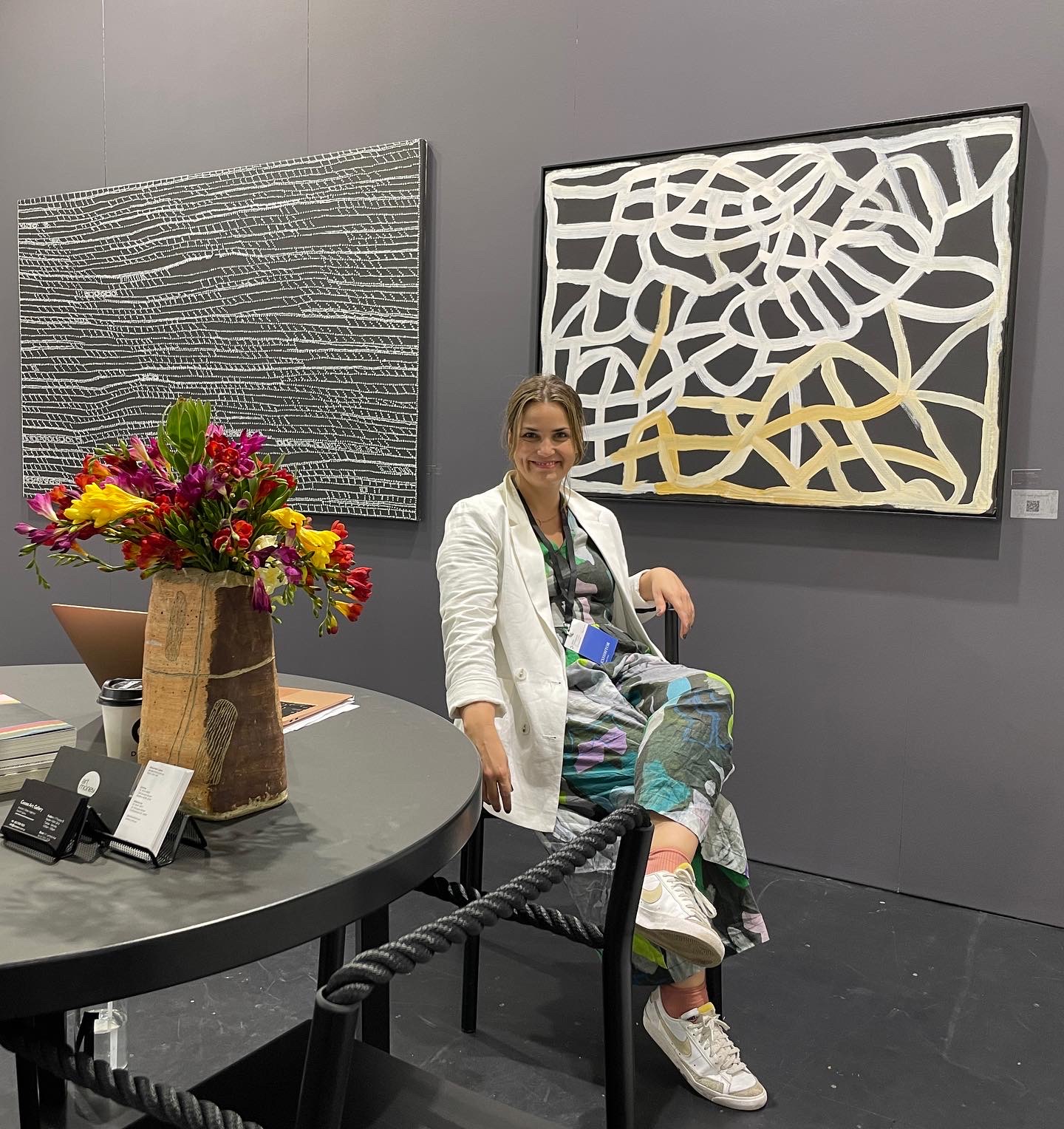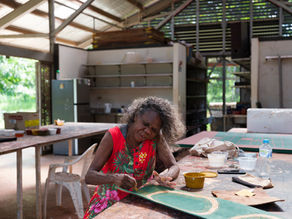Carol Puruntatameri: Tiwi Bark Painter and Custodian of Story
- Mirri Leven

- Sep 13
- 3 min read

Carol Puruntatameri (1959 - )
For Aboriginal artist Carol Puruntatameri, painting is not only a form of creative expression, but a continuation of ceremony—a way to sing to Country, call the Ancestors close, and reaffirm cultural responsibilities. Her bark paintings emerge from a living tradition that connects her directly with land, kinship, and ancestral law.
Tiwi Bark Painting and Ceremony
Unlike many mainland bark painters who centre ancestral narratives and Miny’tji (sacred clan designs), Tiwi bark painting follows a distinct framework. Here, ceremonial performance, kinship, and geography converge through intricate geometric designs such as Pwanga, Jilamara, and Marlipinyini. Passed down matrilineally, these designs are worn during Kulama (coming-of-age) ceremonies and mortuary rituals. When painted on bark, they become portals to Tiwi history, memory, and cultural law.
A Family of First Nations Artists
Carol Puruntatameri is part of an extended family of First Nations artists who have been central to the revitalisation of Tiwi cultural expression. Among them is her uncle Paddy Freddy Puruntatameri, a senior lawman and respected artist who passed down knowledge to her from an early age. Immersed in ceremony and culture, Carol has developed a practice rooted in the old ways but carried forward with her own artistic voice.
The Story of Purrukuparli
A central theme in her painting is the story of Purrukuparli, the ancestral Tiwi man whose decision brought mortality into the world. According to Tiwi law, Purrukuparli’s wife Bima left their infant son Jinani in the shade while she searched for food. Distracted too long, she returned to find him dead in the heat of the sun. In grief, Purrukuparli refused Tapara the Moon Man’s offer to revive the child, instead carrying Jinani into the ocean at Yipali beach. Their footprints remain visible at low tide.
From this story, death became a part of human existence. Tapara escaped into the sky to become the crescent moon, whose scars are reminders of this moment. For the Tiwi people, this creation story explains the balance between life and death, much as Adam and Eve do in Christianity.
Painting as Indigenous Art and Ceremony
Carol Puruntatameri’s bark paintings are defined by finely controlled dotting and precise line work that draw inspiration from Jilamara, the body designs painted during mourning, celebration, and initiation. Her brushwork translates the rhythms of ancestral dance and Tiwi songlines into painted form.
As the artist explains:
“I’m painting the old ways for the new generation.”
In this way, her Indigenous art is not simply a visual record, but a continuation of ceremonial practice and cultural law.
Materials from Country
All of Carol’s materials are prepared in accordance with Tiwi tradition. Bark is harvested from stringybark trees on Melville Island and flattened in the wet season. Ochres are dug from Country, ground into pigment, and mixed with water and natural fixatives. Brushes are made from pandanus root or human hair. Each step of the process affirms Carol’s connection to land, Ancestors, and cultural responsibility.
Biography
Carol Puruntatameri (1959– ) is a Tiwi Aboriginal artist from Yermalner (Melville Island) in the Northern Territory of Australia. Her bark paintings, particularly those depicting the story of Purrukuparli, are recognised as powerful statements of Tiwi identity, history, and cultural continuity.
Her work is part of a broader movement of Indigenous art that preserves ceremonial knowledge while engaging with the contemporary world. For Carol, each bark painting is an act of survival and transmission:
“Ngarukuruwala Kapi Murrakupuni means ‘we sing to the land.’ That’s what we’re doing when we paint—we’re calling our ancestors to walk with us.”











